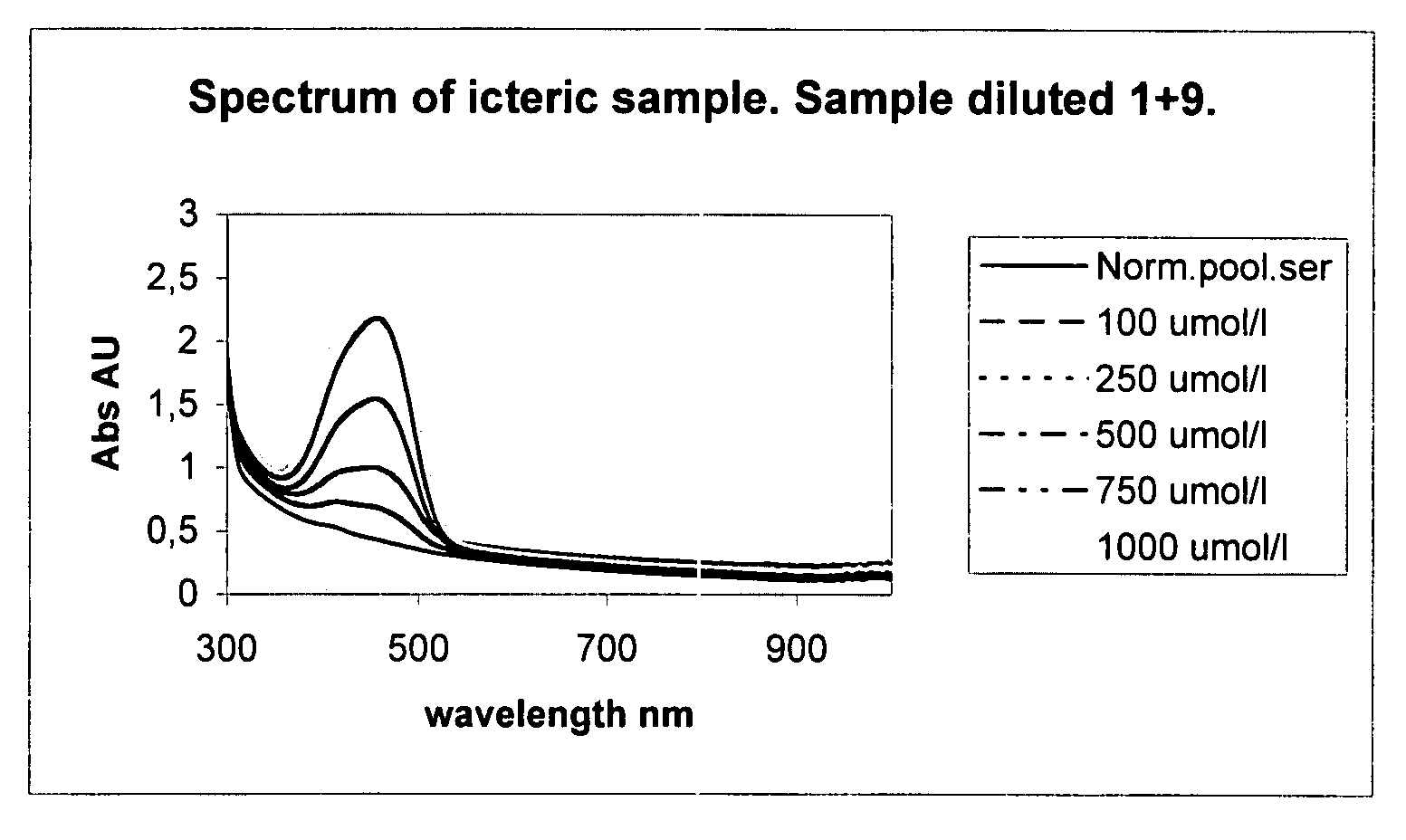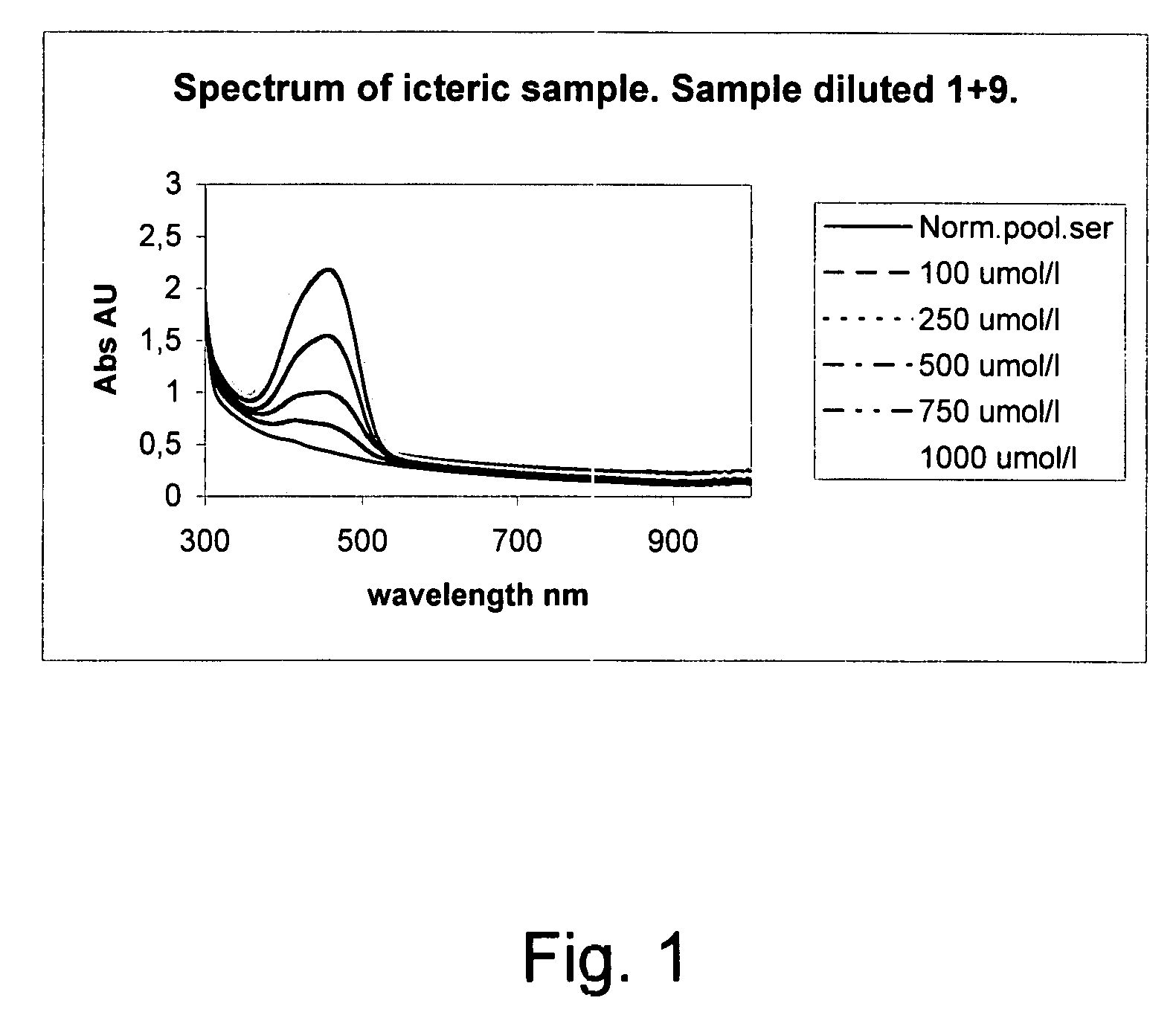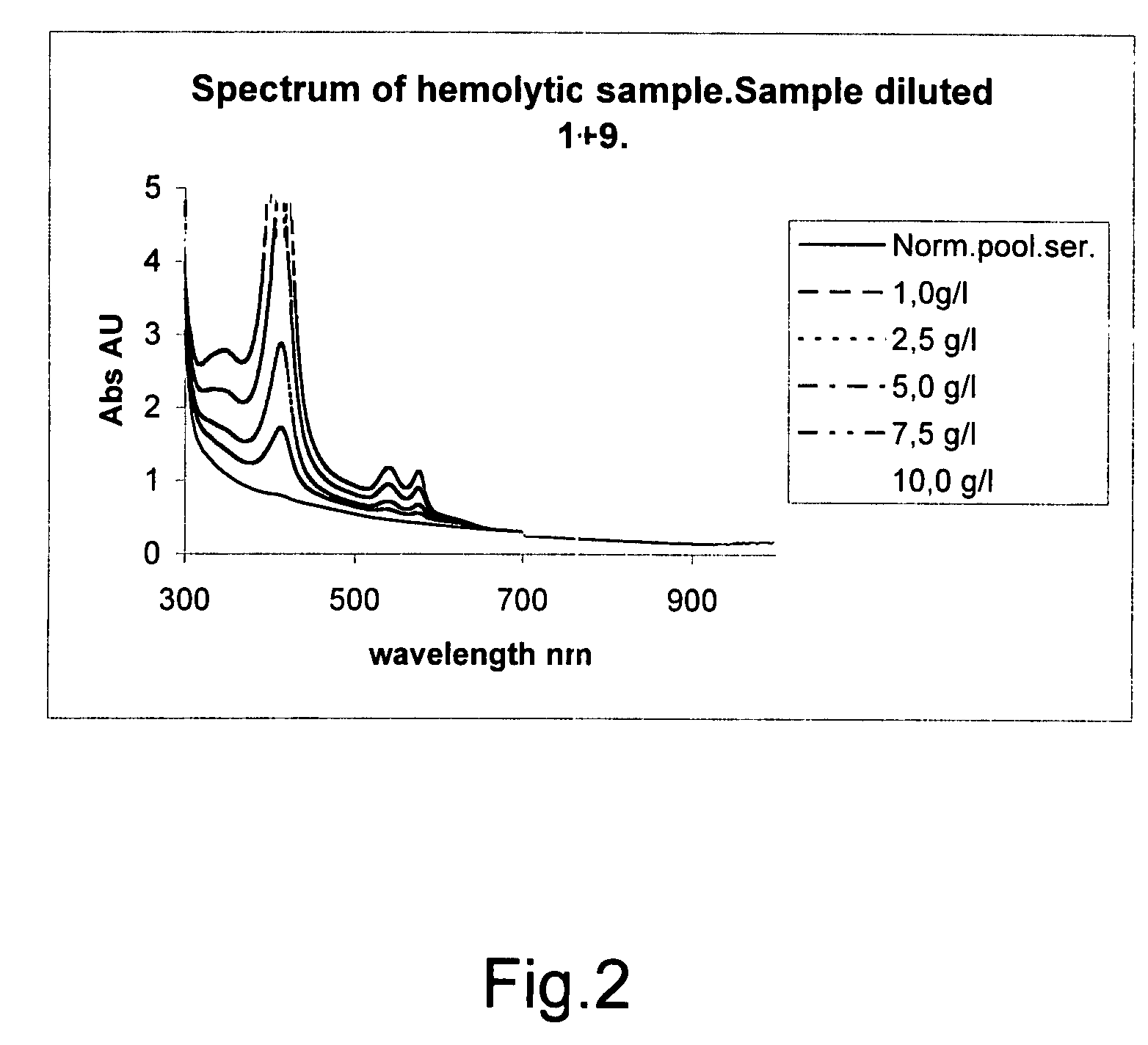Method for automatically detecting factors that disturb analysis by a photometer
a technology of automatic detection and factor detection, applied in the field of clinical chemistry analyzers, can solve the problems of affecting affecting the quality of the analysis, so as to achieve easy and reliable detection, increase the overall reliability of the analysis process, and cost-effective
- Summary
- Abstract
- Description
- Claims
- Application Information
AI Technical Summary
Benefits of technology
Problems solved by technology
Method used
Image
Examples
Embodiment Construction
[0026]The idea of the invention is to use several different wavelengths of light for measuring the absorbance (or reflectance, when applicable) of a sample in order to sort out the concentrations of at least two, preferably three substances that disturb the analysis of a sample. The invention is intended to be used in an analyzer that examines the samples by directing a beam of light on a sample. The absorbance of the sample is then measured either directly or indirectly through reflectance. Normally the analyzer is capable of measuring at different wavelengths for different type of analyses. According to the invention the absorbance of a sample is preferably measured on a wavelength on which a peak in absorbance exist for a specific substance. Additionally, the absorbance is measured on a wavelength that differs from the initial wavelength. The second measurement is performed preferably on a wavelength that is in the vicinity of the root of the peak in question. For three substance...
PUM
| Property | Measurement | Unit |
|---|---|---|
| wavelengths | aaaaa | aaaaa |
| wavelengths | aaaaa | aaaaa |
| wavelengths | aaaaa | aaaaa |
Abstract
Description
Claims
Application Information
 Login to View More
Login to View More - R&D
- Intellectual Property
- Life Sciences
- Materials
- Tech Scout
- Unparalleled Data Quality
- Higher Quality Content
- 60% Fewer Hallucinations
Browse by: Latest US Patents, China's latest patents, Technical Efficacy Thesaurus, Application Domain, Technology Topic, Popular Technical Reports.
© 2025 PatSnap. All rights reserved.Legal|Privacy policy|Modern Slavery Act Transparency Statement|Sitemap|About US| Contact US: help@patsnap.com



